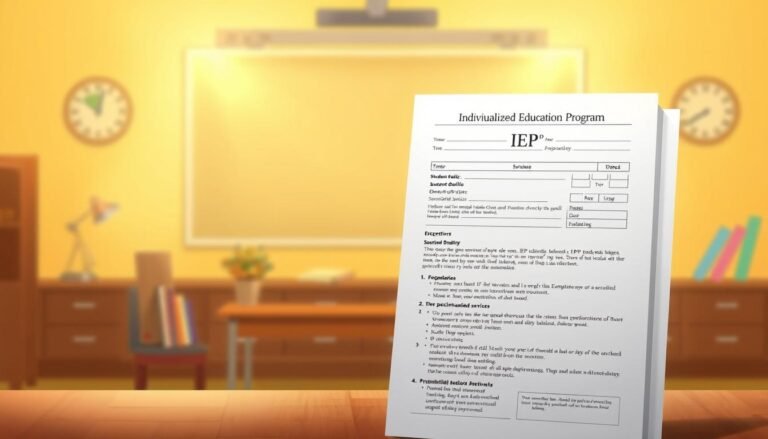
Breaking Down Barriers: Financial Assistance Programs for Families with Learning Disabilities
Introduction: The Urgent Need for Financial Support
Navigating the landscape of learning disabilities can be a daunting journey for families. For many, the challenges extend beyond educational hurdles and encompass significant financial stress. Families facing learning disabilities often find themselves juggling various expenses related to special education, therapy services, and other support systems. With the right financial assistance programs, these families can find relief and empowerment.
In this article, Breaking Down Barriers: Financial Assistance Programs for Families with Learning Disabilities, we will explore essential financial resources that can alleviate some of these burdens. We’ll delve into real-world case studies that provide practical insights, share useful data, and offer actionable recommendations that can make a difference for families in need.
Understanding Learning Disabilities
Before diving into financial assistance options, it’s essential to grasp what learning disabilities are. According to the National Center for Learning Disabilities (NCLD), learning disabilities are neurological conditions that affect the brain’s ability to receive, process, store, and respond to information. This can include challenges in reading, writing, reasoning, and mathematical abilities, impacting a child’s academic and social development.
The Financial Toll of Learning Disabilities
The financial implications of learning disabilities can be staggering. Families may incur costs for assessments, specialized tutoring, therapeutic services, and even assistive technology. Studies reveal that families with children who have learning disabilities often spend upwards of $10,000 annually on educational and therapeutic interventions. This can lead to financial strain, particularly for families with lower incomes or multiple children with disabilities.
Financial Assistance Programs: An Overview
When we talk about Breaking Down Barriers: Financial Assistance Programs for Families with Learning Disabilities, it’s important to recognize the various types of support available. Here are some categories to explore:
1. Federal Programs
IDEA (Individuals with Disabilities Education Act):
The cornerstone of educational support for children with disabilities in the U.S., IDEA mandates that schools provide special education services and accommodations. While this is primarily an educational law, it opens doors to funding for tutoring and therapy services.
Medicaid:
Medicaid provides healthcare coverage for eligible low-income families with children who have learning disabilities. It often covers important therapies, such as occupational and speech therapy.
2. State-Specific Programs
Many states have unique programs tailored to assist families with learning disabilities. For instance, programs such as the Special Needs Scholarship and Educational Savings Accounts can provide financial assistance for private schooling or home education.
3. Nonprofit Organizations
Numerous nonprofit organizations offer grants and financial aid to families with learning disabilities. Here are a few notable examples:
- The Campaign for Learning Disabilities: This organization provides funding for educational resources and interventions.
- The National Center for Learning Disabilities: They often support families facing financial hardships through various initiatives.
4. Charitable Foundations
Some charitable foundations specifically target learning disabilities, providing grants that can offset educational costs or therapy. These can include:
- The Kauffman Foundation: Offers grants for educational resources.
- The GED Testing Service: Provides financial support for families working to achieve GED certification.
Case Studies: Real Families, Real Impact
To illustrate the tangible benefits of these programs, let’s look at a few families that have successfully navigated financial assistance opportunities.
Case Study 1: The Johnson Family
Background: The Johnsons have a son, Ethan, diagnosed with dyslexia. The family struggled to afford the specialized tutoring he needed.
Solution: After researching options, they applied for support through their state’s Special Needs Scholarship Program. The scholarship covered nearly half of Ethan’s tutoring costs, significantly easing financial pressure.
Outcome: With the appropriate support, Ethan’s reading skills improved dramatically. His parents reported not only academic gains but also an uplift in Ethan’s self-esteem, highlighting the profound impact of financial assistance.
Case Study 2: Maria’s Journey
Background: Maria has a developmental disorder that requires regular therapy sessions not covered by her parents’ insurance. The financial burden was overwhelming.
Solution: Her parents turned to Medicaid, qualifying for coverage that enabled them to access the therapy Maria needed.
Outcome: This financial support allowed Maria to attend therapy regularly, leading to noticeable improvements in her communication skills and social interactions.
Case Study Analysis
These case studies emphasize the importance of Breaking Down Barriers: Financial Assistance Programs for Families with Learning Disabilities. They illustrate that financial support is not just about alleviating costs; it’s about unlocking potential and improving life quality for children with learning disabilities.
Tables: Financial Support Programs Breakdown
To provide clarity, here’s a table summarizing various financial assistance programs available for families with learning disabilities:
| Program Type | Name | Description | Eligibility Criteria |
|---|---|---|---|
| Federal Program | IDEA | Funds special education services | Child with qualifying disability |
| State Program | Special Needs Scholarship | Financial aid for private education or tutoring classes | Varies by state |
| Nonprofit | National Center for Learning Disabilities | Grants for educational resources | Families facing financial hardship |
| Charitable Foundation | Kauffman Foundation | Grants for educational resources | Application process required |
Navigating the Funding Process
Applying for financial assistance can be overwhelming. Here are actionable steps families can take to ensure they maximize their chances of securing funding.
Step 1: Research Available Programs
Understanding what’s available is crucial. Families should familiarize themselves with federal, state, nonprofit, and charitable funding opportunities. Websites like Benefits.gov and local educational resources can be incredibly helpful.
Step 2: Gather Documentation
Most applications require documentation, such as medical diagnoses, income statements, and educational assessments. Collect these documents early to streamline the process.
Step 3: Prepare a Compelling Application
When applying for funding, it’s vital to clearly articulate the child’s needs and the specific support required. Including testimonials or insights from educators can strengthen applications.
Step 4: Find Resources for Assistance
Many organizations offer assistance with the application process. Families can reach out to local advocacy groups for guidance or even workshops on navigating funding programs.
The Ripple Effect of Financial Support
Families who succeed in securing financial assistance often report that the benefits extend beyond financial relief. Children gain confidence, parents experience lower stress levels, and family dynamics improve.
These programs allow families to focus more on nurturing their children’s potential rather than stressing over finances. Thus, engaging with Breaking Down Barriers: Financial Assistance Programs for Families with Learning Disabilities becomes not just a financial necessity but an investment in a brighter future for these families.
Conclusion: Inspiring Change
In summary, learning disabilities should not lead to financial despair. Thanks to numerous Breaking Down Barriers: Financial Assistance Programs for Families with Learning Disabilities, families can access the resources they need to support their children’s success.
From federal programs like IDEA to nonprofit organizations, financial assistance plays a pivotal role in empowering families to overcome challenges and provide their children with opportunities to flourish.
The journey for families with children who have learning disabilities is filled with ups and downs, but understanding the available resources can transform the experience into one of hope and empowerment.
FAQs
1. What are learning disabilities?
Answer: Learning disabilities are neurological conditions that impact the brain’s ability to receive, process, store, and respond to information, affecting educational performance.
2. How do financial assistance programs work?
Answer: These programs provide families with funds or support to cover educational and therapeutic costs related to learning disabilities, helping mitigate financial strain.
3. How can I find financial assistance for my child?
Answer: Families can research federal, state, nonprofit, and charitable programs that offer funding for children with learning disabilities.
4. Are there income eligibility requirements for these programs?
Answer: Many programs do have income eligibility requirements, but some are based on assessed needs rather than financial status.
5. Can financial assistance improve outcomes for children with learning disabilities?
Answer: Yes, financial support can help families access necessary interventions, improving educational outcomes, social skills, and self-esteem for children with learning disabilities.
With this foundational knowledge and practical insights, we hope families will feel empowered to seek out and benefit from the various financial assistance programs available. By breaking down barriers, we strengthen the future for children with learning disabilities, ensuring they are not alone on their journey.
















